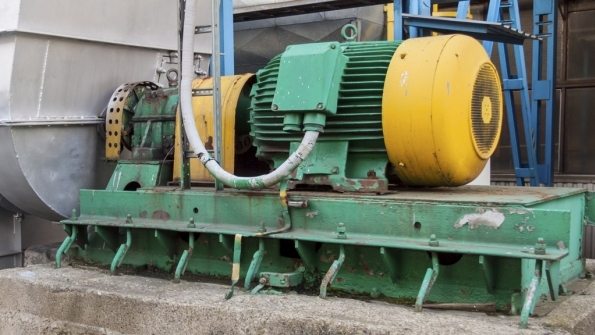Rotating equipment encompasses many different types of machinery, including electrical motors, blowers, fans and rotary pumps. For the most part, this equipment works smoothly, and according to Fluke, this means zero vibration.
However, problems sometimes arise with machinery, specifically with motor bearing wear. You’ll notice potential issues when the bearing is less efficient, emits more heat and has an increased drag. There are a few ways you can fix rotating equipment while also developing an understanding of what caused issues and how to avoid them.
What Are Bearings?

According to the American Bearing Manufacturers Association, these components are precision made and allow various types of machinery to operate at exceptionally high speeds. As a result, bearings often help equipment carry large loads with relative ease, durability and reliability. Machines built with bearings include cars, construction equipment, computers and airplanes.
There are also four types of common bearings:
- Tapered roller
- Spherical roller
- Ball
- Cylindrical and needle
The four types of bearings are important to distinguish because they’re all made differently and have varying designs. For example, ball bearings are for low friction and medium to light loading. Ball bearings are commonly found in everyday items such as fans. Spherical roller bearings enable medium friction and medium to heavy loading. As such, spherical rollers can be found in conveyors and other sorts of processing equipment.
Once a bearing fails, motor failure is expedited if issues are not fixed immediately. According to Fluke, 13 percent of motor failures can directly be attributed to bearings breaking down. Another 60 percent of mechanical issues are attributed to the same cause.
Bearings are designed to last a long time, according to Machinery Lubrication. In fact, the publication said fewer than one percent of bearings do not reach their expected life. If bearings do end up failing, there can be a few reasons as to why.
Get Motors Working Again
Bearing failure can stem from numerous issues such as incorrect fit, the wrong type of lubrication and having a heavier load than the bearing was designed to handle. Likewise, Applied Industrial Technologies stated failure can also be attributed to improper mounting, such as the bearing being too loose, thus generating extra amounts of heat.
In nearly all cases, Machinery Lubrication said most premature failings can be avoided, but when issues do arise, it’s imperative to discover and fix the issue to prevent future occurrences.
To get motor bearings working again, businesses and manufacturers will want to utilize the Fluke 810 Vibration Tester. The device is designed to be used during troubleshooting to help pinpoint exactly why bearings have stopped working as well as before, or not at all. The Vibration Tester helps identify wear to ball or roller bearings. Manufacturers and other users can save plenty of headaches and downtime by incorporating the device into their troubleshooting routine.
Bearing failure isn’t a common happening, yet when it does, machines and other motor equipment can be severely affected. To avoid serious issues, the Fluke 810 Vibration Tester can help identify issues during the troubleshooting phase and by doing so, future issues can be averted.